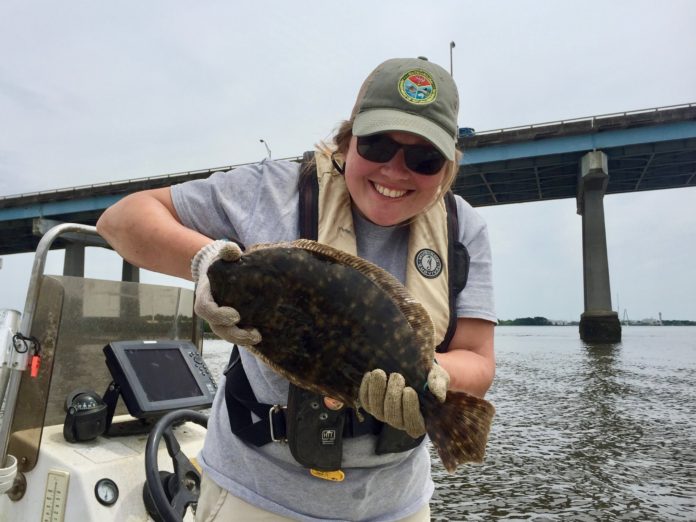A report published on Tuesday by the South Carolina Department of Natural Resources (SCDNR) has determined that local flounder numbers are at a record low.
The shallow waters of the southeast are home to three species of the fabled flatfish. Flounder are fascinating predators that put up a fun fight on the line and have inspired volumes of recipes, from breaded and fried to stuffed with crabmeat to seared with lemon.
Flounder are prized in the Southeast, and loved here in Beaufoert, but recent research shows their future is also at risk if action isn’t taken soon.
In early 2019, a team of researchers completed a study looking at the state of southern flounder across northern Florida, Georgia, South Carolina, and North Carolina, using information collected from anglers and by biologists in each state.
This was the very first assessment of flounder from a regional perspective, which experts deemed necessary because southern flounder in the south Atlantic all belong to one population.
What the study found was alarming: flounder numbers across the region are hovering at historically low levels and have been overfished for decades.
North Carolina has taken the lead on addressing overfishing, by immediately closing their recreational and commercial fisheries and instituting shortened fishing seasons moving forward. Their actions alone will not ensure the recovery of southern flounder. Because flounder ignore state boundaries, a lasting solution will require similar action in each state across the region.
Following the regional study, SCDNR biologists took a closer look at the state of flounder just in South Carolina. “While the regional assessment showed flounder were doing poorly across the region overall, we wanted to look at our own flounder data to see if we were seeing the same declines locally,” said Dr. Joey Ballenger, associate scientist at SCDNR and lead flounder biologist for the state.
The SCDNR data showed the same troubling trend: South Carolina’s flounder numbers are the lowest they’ve been since record-keeping began.
“The data are clear, with evidence of declines in flounder across the entire state and catches in recent years at all-time lows,” Dr. Ballenger said. “This decline doesn’t seem to be confined to one area of the state. We observed it in all of our major estuaries.”
Low numbers of adult flounder were not the only red flag that appeared in the data. The surveys also showed a decline in young flounder and a decline in the average size of flounder caught.
“Our results also suggest the average size of flounder encountered in our surveys has declined by over an inch over the last 10 years or so,” said Dr. Ballenger. “This is often a sign of heavy fishing pressure, since people are removing the fish as soon as they reach minimum size requirements, with very few bigger fish remaining in the population.”
A popular fish for anglers
There are 400,000 licensed anglers in coastal South Carolina.
Among anglers in SC, flounder has consistently ranked as one of the top three most targeted saltwater fish – in some years even exceeding the popularity of red drum. And since 99% of the flounder harvested in our state are taken by recreational anglers, that means a greater number of fishermen are vying for the same or fewer numbers of fish.
The shrinking ratio of fish to anglers is not news to many who fish along the coast, and in fact, South Carolina has already seen a number of efforts to address the overharvest of flounder in the past decade.
What can be done
Since 2007, the minimum size limit for keeping flounder has increased from 12” to 15”; the bag limit has decreased from 20 to 10 fish per person per day; and the daily boat limit was changed from no limit to 20 fish per boat per day.
Unfortunately, while steps in the right direction, these changes to minimum size and bag limits have not yet shown much positive impact on the population.
SCDNR biologists are continuing their work to analyze data and identify a range of management options to halt overfishing and then begin to rebuild this important population.
See the full article here from South Carolina Coastal Resources, a blog of the SCDNR.










